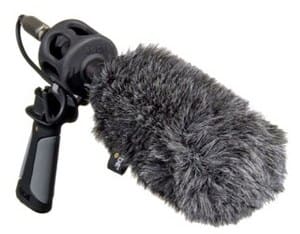The cat’s miaow or purrfect nonsense: can an app translate for your feline friend?

There are frenzied episodes of growling. Chirps, seemingly in greeting. Purrs of apparent relaxation. And the miaows – for food, affection, to be let out of the window and then back in again. Then out again. Then back in again.
If you live with a feline, these noises will be the soundtrack to your life, something Britain’s 12 million cat owners have become even more familiar with while working from home. Having recently gone freelance, my cat is now my main conversation partner during daylight hours. Except, it’s rather one-sided, isn’t it? I chat away while she replies by sliding her green eyes from side to side, flopping on to a cushion, or noisily licking her backside. Then again, perhaps her name is to blame for the uncertainty: Maybe.
A new app promises help. A self-described “cat translator”, MeowTalk works by identifying a sound from your furry friend and suggesting which one of 13 human phrases it corresponds to. In Japan alone, there have been 17m downloads since launch and 250m miaows recorded. The recently added MeowRoom feature works like Amazon’s Alexa – founder Javier Sanchez was formerly one of its engineers – listening for your cat’s voice in a room and sending the translation to your phone when it’s detected. I buy the premium version for £2.49 a month immediately.
My husband scoffs. Historically speaking, cats have had a bad press – thought to be the companions of witches in the middle ages and burned alongside them. They are depicted as selfish, vindictive, imperious and caring only where their next meat hit is coming from. On Instagram, owners assign them “Jekyll and Hyde” personalities, painting them as spiteful one minute, adorable the next.
But couldn’t this reputation for fickleness be unmerited? I want to hear from Maybe directly.
A few gentle prods fail to elicit a miaow, so I resort to recording her purrs – which the app’s creators have admitted are harder to translate. Maybe, according to the app, is saying: “Let me relax”, which seems like it could be accurate, seeing as she’s lying sleepily on the sofa while I wave a phone in her face.
Later in the day, I record a few more. What starts as cockle-warming (“You are very special to me” and “We are a bonded pair”) quickly becomes Americanised – “Just chilling!” and “I’m super beat!” – and I wonder whether the app has confused Maybe with Garfield.
The next morning, at breakfast, she miaows loudly. Translation: “Hey baby, let’s go somewhere private!”, which I can only imagine means she’s talking directly to her tin of food. Still, I persevere.
The app’s founders – Sanchez, and Susanne Schotz, author of The Secret Language of Cats – aren’t the first to harness developments in voice recognition technology. After all, the human urge to communicate with animals is strong, if usually anthropomorphic, just look at Dr Dolittle, the scientists who tried to teach animals to talk – from apes to dolphins, and even the popular new Netflix documentary Inside the Mind of a Cat.
They are filling a void. We know relatively little about cats because they’re harder to analyse than other domestic animals. Put a dog in a laboratory and it will usually be fine, but take a cat out of its territory and it won’t act normally, making studies almost impossible. Cats are also bad at showing pain or distress, which is why owners were warned by vets to look carefully for signs of stress or depression during lockdown, when many cats were thought to be upset by the change in routine.
Worried, I downloaded an inferior translation app in the summer of 2020 and followed Maybe around the house in an attempt to see if she could be suffering from mental illness – only stopping when my husband suggested I might be the one showing signs of psychological disturbance.
Overnight, I leave the MeowTalk app running in the bedroom as I sleep. In the morning, my phone has recorded dozens of cat sounds and helpfully revealed that at 6.12am when Maybe jumped on to my
face, purring loudly, she was actually telling me: “I need to relax.” I know the feeling.
One quirk of the app is that, by miaowing, humans can trick it into thinking they are cats. I chirp at my phone, “I’m in love!” the screen reads. After several minutes of cajoling, my husband does the same. His low yowl translates as “I’m in a bad mood”, which doesn’t seem altogether inaccurate.
What he does secretly enjoy, though, is listening back to Maybe’s recordings. Sanchez and Scholtz have been contacted by grateful users who have been able to keep treasured clips of their beloved pet after they have died. Others have been able to take their cat to the vet after the app identified possible signs of illness.
As shown by my experience, the technology seems rudimentary. But perhaps they are on to something. Or maybe downloading the software is enough to encourage owners to tune in to what their cats have been trying to tell them all along.
(Story source: The Guardian)





